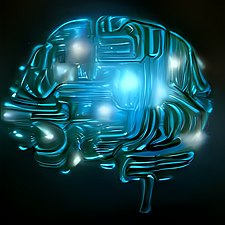Artificial Intelligence and Human Labor
Artificial Intelligence and Human Labor: Navigating the Future of Work

The advancement of artificial intelligence (AI) has ushered in a new era of technological innovation, transforming industries and reshaping the way we live and work. From self-driving cars to virtual assistants, AI-powered technologies have become integral to our daily lives. As AI continues to evolve and become more sophisticated, it raises profound questions about the future of human labor and the dynamic relationship between machines and humans.
The Rise of AI:
Artificial intelligence encompasses a wide range of technologies that enable machines to simulate human intelligence and perform tasks that typically require human cognition. Machine learning, neural networks, and deep learning algorithms are some of the key components driving AI advancements. These technologies have demonstrated remarkable capabilities in data analysis, pattern recognition, language processing, and decision-making, often outperforming human experts in specialized domains.
Automation and Labor Disruption:
The increasing capabilities of AI-driven automation have led to concerns about potential job displacement and labor disruption. Routine and repetitive tasks in various industries, such as manufacturing and customer service, are particularly susceptible to automation. While AI has the potential to streamline processes, increase efficiency, and reduce human error, it also raises questions about the impact on jobs and the broader economy.
Complementary Collaboration:
Contrary to the narrative of AI replacing human labor, many experts argue that AI technologies can be harnessed to augment human capabilities and enhance productivity. Rather than a zero-sum game, the relationship between AI and human labor can be one of collaboration and synergy. AI-powered tools can assist humans in complex decision-making, analyze vast amounts of data, and perform tasks that are time-consuming or dangerous.
Reskilling and Upskilling:
As AI transforms industries, the workforce must adapt and acquire new skills to remain relevant in the job market. Reskilling and upskilling initiatives are essential to equip individuals with the knowledge and expertise needed to navigate the evolving landscape of work. Continuous learning and professional development become crucial as AI reshapes job roles and creates new opportunities in emerging fields.
Ethical Considerations:
The integration of AI into the workforce raises important ethical considerations. The responsible development and deployment of AI technologies require careful consideration of fairness, accountability, transparency, and bias mitigation. Ensuring that AI-driven decisions align with human values and principles is essential to avoid unintended consequences and reinforce trust in these technologies.
Social and Economic Impacts:
The widespread adoption of AI has far-reaching social and economic implications. While automation may lead to job displacement in certain sectors, it can also create new opportunities in AI-related fields such as data science, machine learning engineering, and AI ethics. Policymakers, educators, and industry leaders play a pivotal role in shaping the transition to an AI-augmented workforce, ensuring that the benefits of technological advancements are equitably distributed.
The Future of Work:
The future of human labor in the age of AI is a multifaceted landscape marked by challenges and opportunities. The impact of AI on jobs will likely vary across industries, with some roles evolving, others transforming, and new professions emerging. The integration of AI will redefine the nature of work, emphasizing skills that are uniquely human, such as creativity, emotional intelligence, critical thinking, and adaptability.
In Conclusion:
Artificial intelligence is reshaping the world of work, challenging traditional notions of labor and productivity. Rather than a replacement for human labor, AI technologies offer the potential for collaborative partnerships that amplify human capabilities. As we navigate the complexities of this evolving relationship, it is imperative that we address ethical concerns, promote lifelong learning, and shape policies that ensure a future where humans and machines coexist and thrive.
Stay tuned for more updates on the dynamic interplay between artificial intelligence and human labor as we venture into a future that promises both innovation and transformation!
Comments
Post a Comment